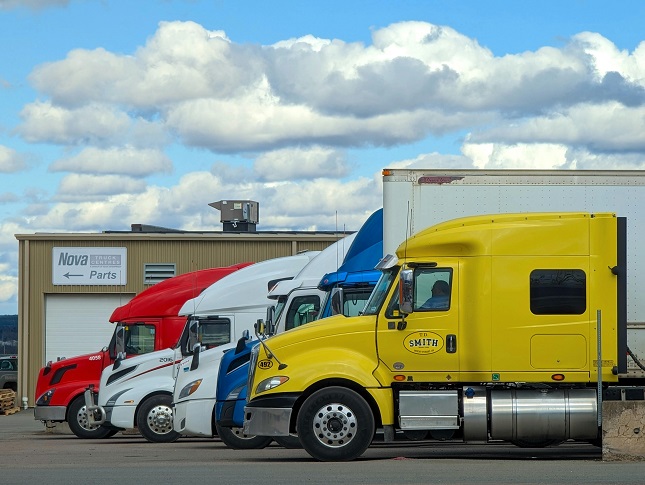Running a trucking business involves more than just purchasing trucks and securing contracts. While fuel, insurance, and driver wages are expected expenses, there are several hidden costs that can quietly eat into profits if not properly managed. These unforeseen expenses can catch business owners off guard, leading to financial instability or reduced growth potential. Understanding these hidden costs and implementing effective strategies to mitigate them is crucial for long-term success.
1) Unexpected Maintenance and Repairs
Even with routine maintenance, trucks experience wear and tear, leading to unexpected breakdowns. Repair costs can be substantial, especially for major components like engines, transmissions, and braking systems. Beyond the cost of parts and labor, downtime can be even more expensive, as every hour a truck is off the road translates into lost revenue.
How to Manage It:
- Implement a preventative maintenance program to address small issues before they escalate.
- Invest in telematics and fleet management software to monitor vehicle health in real time.
- Establish a maintenance fund to cover emergency repairs without disrupting cash flow.
2) Regulatory Compliance and Permits
Trucking businesses must adhere to a wide range of regulations, including safety standards, emissions laws, and licensing requirements. Failure to comply can result in hefty fines, legal issues, or even temporary shutdowns. Additionally, obtaining permits for overweight loads, interstate travel, or hazardous materials can be costly.
How to Manage It:
- Stay updated on local, state, and federal regulations to avoid fines and penalties.
- Work with a compliance specialist or legal advisor to navigate complex requirements.
- Allocate funds for permit renewals and regulatory fees in the annual budget.
3) Driver Turnover and Training
The trucking industry faces one of the highest turnover rates, with many drivers leaving due to long hours, challenging working conditions, or better opportunities elsewhere. Replacing a driver can cost thousands in recruiting, onboarding, and training expenses.
How to Manage It:
- Offer competitive pay and benefits to attract and retain skilled drivers.
- Create a positive work environment with flexible schedules and career growth opportunities.
- Invest in driver training programs to improve skills and reduce accident risks.
4) Fuel Price Volatility
Fuel is the single largest operational expense for most trucking businesses. Price fluctuations can be unpredictable, making it difficult to budget accurately. Sudden spikes in fuel costs can quickly erode profit margins if not managed effectively.
How to Manage It:
- Use fuel cards and discount programs to reduce costs at the pump.
- Invest in fuel-efficient technologies, such as aerodynamic trailers and low-rolling-resistance tires.
- Optimize route planning to minimize unnecessary mileage and fuel consumption.
5) Financial Aid and Funding Solutions
Trucking businesses often require access to financing to cover unexpected expenses, expand their fleet, or improve cash flow. Whether it’s purchasing new trucks, upgrading equipment, or managing seasonal slowdowns, financial aid can provide crucial support.
Using a truck loan calculator can help business owners to estimate their financing needs and repayment options before committing to a loan. By understanding available funding options, trucking companies can make informed decisions that support business growth while maintaining financial stability.
Companies like ToroTMS offer helpful resources on financial management, supporting trucking businesses in making informed decisions that sustain growth and financial stability.
6) Managing Cash Flow for Long-Term Success
A trucking business with poor cash flow management can quickly run into trouble, even if it’s profitable on paper. Late client payments, unexpected expenses, and rising costs can create financial strain.
How to Manage It:
- Offer incentives for early payments from customers to improve cash flow.
- Diversify revenue streams by adding freight brokerage or logistics services.
- Establish an emergency fund to cover unexpected costs without disrupting operations.
Final Thoughts
The trucking industry is full of hidden costs that can erode profits if left unchecked. However, with proper planning and proactive cost management, business owners can navigate these challenges effectively. By leveraging technology, securing financial aid, and optimizing operations, trucking businesses can remain competitive and profitable in an ever-evolving market.






































